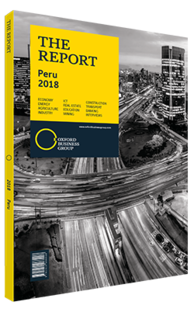Jorge Arangurí, Executive Director, Danper : Interview

Interview : Jorge Arangurí
How significant is the development of Peru’s own technology to further add value to its products?
JORGE ARANGURÍ: Peru can lead innovation efforts in the region by bridging the technology gap in the agro-industrial sector in order to satisfy increasingly demanding international markets. Consumers expect healthy products and the ability to check information on a product’s nutritional values. Technology is the answer to providing this information.
Until now, the Peruvian agro-industrial sector has made great investments in technology. As a result, the value of Peruvian exports went from $100m in 1994 to $5bn in 2017. These investments were made to import technology and adapt it to local needs. Having our own technology, rather than importing it, would enhance the growth of the sector and strengthen its sustainability. In order to achieve this, however, the sector will need to see greater cooperation between the state, academia and the private sector.
What are Peru’s competitive advantages over other significant regional agro-producers?
ARANGURÍ: The country’s advantage over other agro-producers is the fact that it contains more than 80 out of over 100 microclimates that exist in the world. In other words, Peru has more than 80% of the world’s microclimates concentrated in a surface area of approximately 1.2m sq metres, meaning that virtually anything can grow on Peruvian soil. Furthermore, from a logistics standpoint, the country is perfectly located on the centre of South America’s west coast, almost directly opposite Oceania and South-east Asia. In addition, ships leaving Peru through the Panama Canal can arrive in Europe in less than 15 days.
Taking all these factors into consideration, the potential of Peru’s agri-business is obvious, especially taking into account that only 160,000 ha out of 4m ha of arable land is assigned to modern or precision agriculture. With 96% of Peru’s arable land yet to produce products with added value, there is great opportunity for untapped growth in the sector .
To what extent is the sector’s regulatory framework contributing to its growth?
ARANGURÍ: Peru has offered an open and stable economic climate for investors over the last 20 years. Despite the political turbulence of 2017 and early 2018, the private sector has maintained its trust in Peru’s economic and trade policies. In fact, in line with these the country has elaborated phytosanitary protocols that have enhanced the competitiveness of the agro-industrial sector. In addition, the country has devised promising policies for exporters. For instance, the current framework establishes a drawback of tariffs associated with the import of consumables used in products for export. Furthermore, the agrarian regulatory framework established a 15% income tax, with no tariffs on imported machinery and technology, which contributes to making the agro-industrial sector very competitive. Within this context the focus is also placed on recuperating arable land in order to safeguard food security in the country, as mandated by the UN.
How is the sector addressing water scarcity and other environmental challenges?
ARANGURÍ: Modern agriculture in Peru has succeeded thanks to drip irrigation. The sector’s goal has been to increase the efficiency of water consumption annually through the adaptation of certain specific technologies. For instance, considering a large percentage of water resources are lost due to evaporation, technology has been adopted so that through a mesh, evapotranspiration is avoided and water is retained. This is very important, especially to enhance food sustainability in the country. Additionally, the sector is now shredding crop waste after each season and turning it into fertiliser in order to reduce levels of chemical fertiliser consumption, and to benefit the environment.
You have reached the limit of premium articles you can view for free.
Choose from the options below to purchase print or digital editions of our Reports. You can also purchase a website subscription giving you unlimited access to all of our Reports online for 12 months.
If you have already purchased this Report or have a website subscription, please login to continue.

